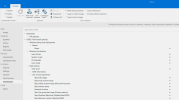muelltonne2011@rz-online.
New Member
good day,
i am looking for an information how NTLite does run the SetupComplete.cmd when using an OEM key.
I read in another post this is done via the OEM way (OEM setup complete).
https://www.ntlite.com/community/index.php?threads/post-setup-steps-are-not-working.2902/
unfortuanly i cannot find "OEM setup complete" in the unattended toolbar.
Is this because i am using the free license?
How does this look like in autounattend.xml file?
My assumption was this is done via running a cmd.exe pointing to the SetupComplete.cmd
Is this correct or how can i achieve that?
I do not want to fall back into the XP time with RunOnce registry
thanks for any hint,
greetings from Germany
i am looking for an information how NTLite does run the SetupComplete.cmd when using an OEM key.
I read in another post this is done via the OEM way (OEM setup complete).
https://www.ntlite.com/community/index.php?threads/post-setup-steps-are-not-working.2902/
unfortuanly i cannot find "OEM setup complete" in the unattended toolbar.
Is this because i am using the free license?
How does this look like in autounattend.xml file?
My assumption was this is done via running a cmd.exe pointing to the SetupComplete.cmd
Code:
<settings pass="oobeSystem">
<component name="Microsoft-Windows-Shell-Setup" [...]
<OEMInformation>
<RunSynchronous>
<RunSynchronousCommand wcm:action="add">
<Order>1</Order>
<Path>cmd.exe /c "%WINDIR%\Setup\Scripts\SetupComplete.cmd"</Path>
</RunSynchronousCommand>
</RunSynchronous>
</OEMInformation>
</component>
</settings>I do not want to fall back into the XP time with RunOnce registry
thanks for any hint,
greetings from Germany
Last edited:

